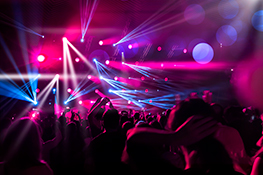Stage Lighting Setup Simplified: A Quick Start Guide for Beginners
Understanding the Basics: Types of Stage Lighting
Before diving into setup, it’s crucial to understand the different types of stage lights. Each serves a unique purpose, contributing to the overall mood and visual storytelling. We’ll explore the most common:
- Spotlights: These highly focused lights are ideal for highlighting specific actors or objects on stage. Their intensity and beam angle are adjustable, offering versatility for a variety of scenes.
- Floodlights/Wash Lights: Unlike spotlights, these provide broad, even illumination across a larger area. They’re essential for setting the overall ambiance and illuminating the background.
- Fresnels: Known for their soft, diffused light, Fresnels are perfect for creating a warm, inviting atmosphere. Their adjustable beam spread allows for precise control.
- PAR Cans: These robust lights are often used for intense washes or backlighting. Their simple design and durability make them a staple in many productions.
- LED Lighting: Offering energy efficiency, long lifespan, and vibrant color options, LED lighting is rapidly becoming the industry standard. They offer significant advantages over traditional incandescent or halogen lights.
Essential Equipment for a Basic Setup: Your Lighting Kit
To get started, you’ll need a few key components:
- Lighting Fixtures: Begin with a mix of spotlights and floodlights to provide versatility.
- Lighting Stands (or Trusses): These provide the structure to support your lights at the correct height and angle.
- Lighting Cables & Connectors: Ensure you have enough cables to reach your fixtures from the power source and dimmer.
- Dimmer Pack: A dimmer pack allows you to control the intensity of your lights, creating dynamic lighting effects.
- Gels (Color Filters): These colored filters transform the light’s color, significantly affecting the mood and atmosphere.
- Barndoors/Barn Doors: These accessories control the light’s spill, preventing unwanted light from reaching unintended areas.
Step-by-Step Setup Guide: Bringing Your Vision to Life
Now, let’s walk through a basic setup process:
- Plan Your Lighting Design: Before you start, sketch out a basic lighting plan. Consider the placement of lights based on the scene’s requirements and the overall mood you want to create.
- Assemble Your Stands and Fixtures: Securely attach your lights to the stands, ensuring they’re stable and safe.
- Connect the Cables: Carefully connect the cables from the dimmer pack to each light fixture. Always double-check connections to prevent short circuits.
- Position Your Lights: Place the lights according to your plan, adjusting the height and angle as needed. Use barndoors to control spill.
- Test Your Setup: Turn on the lights and adjust the dimmer to check intensity. Experiment with different color gels to achieve your desired effect.
- Refine and Adjust: Once the lights are on, fine-tune the positioning and intensity until you achieve your desired look. This iterative process is key to perfecting your lighting.
Advanced Techniques for Enhanced Lighting
Once comfortable with the basics, explore more advanced techniques to elevate your lighting design:
- Color Mixing: Experiment with different gel combinations to create unique colors and subtle transitions.
- Lighting Angles and Shadows: Mastering light angles and creating strategic shadows dramatically enhances depth and realism.
- Go/No-Go System: Implement a standardized system for controlling lights, ensuring smooth transitions and minimizing errors.
- Utilizing Moving Lights: Moving lights add dynamic effects and choreography to your lighting design, offering exciting possibilities.
Troubleshooting Common Issues
- Dim Lights: Check cable connections, dimmer settings, and the light bulbs themselves.
- Flickering Lights: This often indicates a problem with the power supply or a loose connection.
- Uneven Lighting: Reposition your lights or adjust their angles to achieve a more even distribution.
Conclusion: Embrace the Art of Stage Lighting
With practice and experimentation, you’ll master the art of stage lighting. Remember to start with the basics, gradually expanding your knowledge and skills. This guide offers a foundation for your journey – now, it’s time to illuminate your stage!


 Auditorium Construction Services
Auditorium Construction Services 